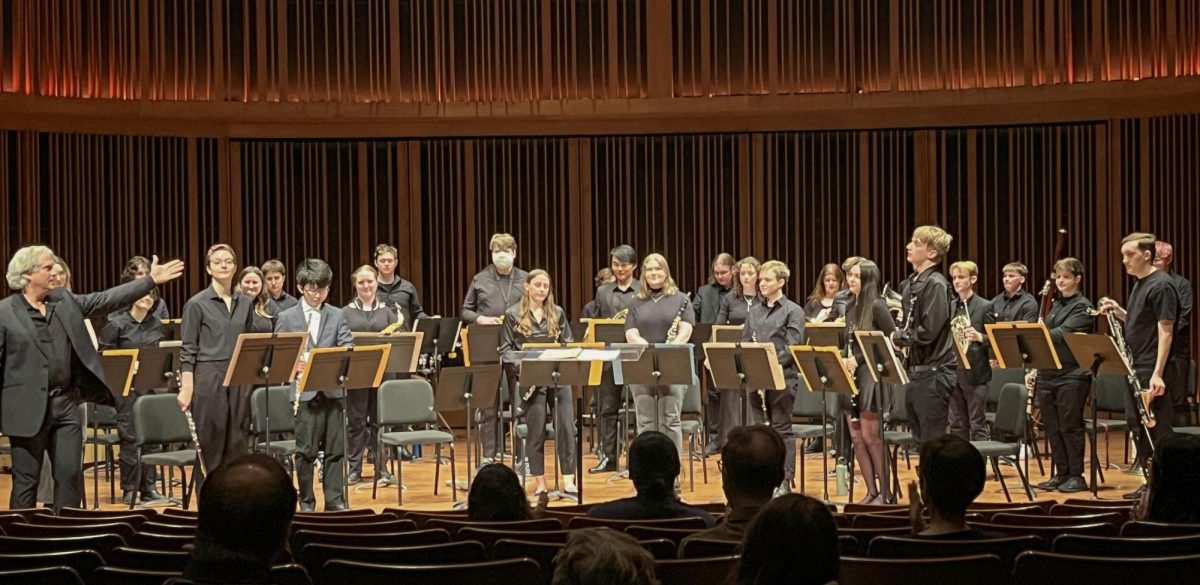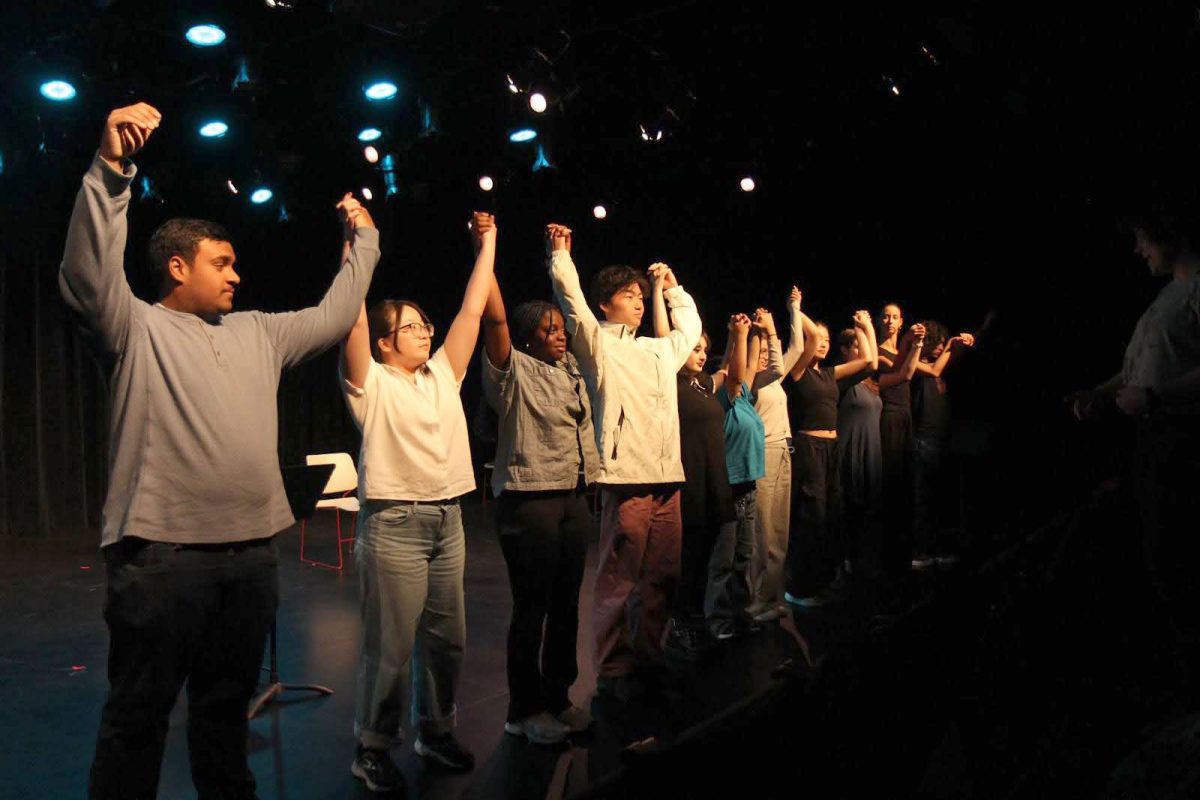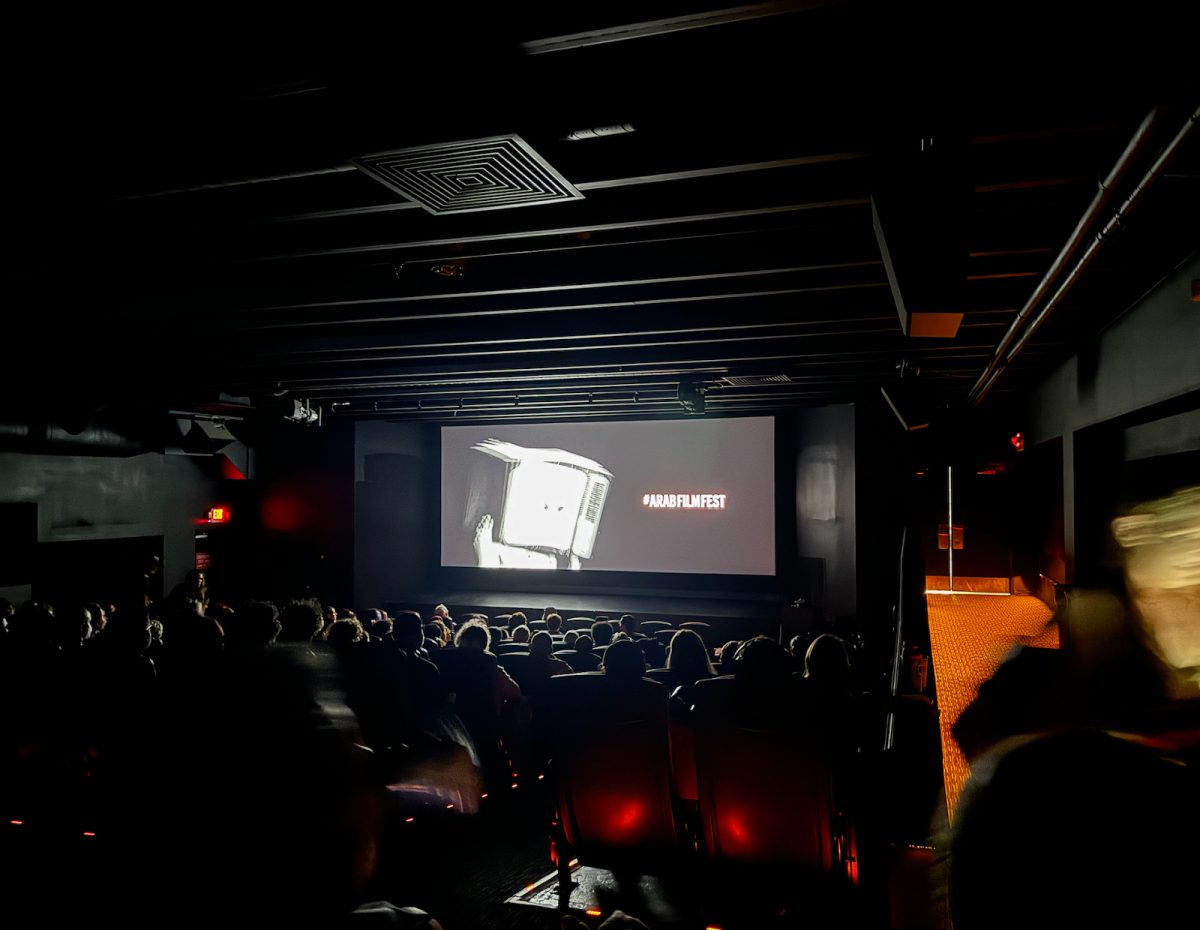On April 26, the Macalester College Wind Symphony gathered in Mairs Concert Hall for their biannual end-of-semester concert. An array of woodwind, brass and percussion instruments filled the stage, ready to lead audience members on a musical journey spanning moods and movements.
The Wind Symphony is composed of roughly 30 wind and percussion musicians directed by Aaron Isakson. A longtime member of the Saint Paul classical music community, Isakson occasionally substituted for former Director Shelley Hanson during her tenure leading the symphony. After Hanson stepped down, she asked Isakson to take up the position in her stead.
“The Wind Symphony only meets from 7:15 to 8:45 [p.m.], so we have an hour and a half a week,” Isakson said. “To put together a concert in an hour and a half a week, we have to do a lot of work quickly. And [Hanson] knew that I was used to that sort of timetable.”
Isakson believes the process of collaboratively preparing for concerts can often be more rewarding than the concerts themselves.
“Making musical changes in the moment and listening to a piece come together in real time in rehearsal is one of my favorite things,” he said. “When everybody gets on the same page … when it actually starts to come together, then it becomes a work of art.”
This spirit of teamwork permeates all aspects of the Wind Symphony. For example, Isakson and his students curated pieces for the concert as a joint effort.
“Because I was here this full year, there was plenty of time for the students to suggest things,” Isakson said. “‘Can we try this?’ ‘Can we try that?’ We’re playing the ‘Second Suite in F for Military Band’ by [Gustav] Holst. That was a student suggestion from one of our trombone players, and it turned out to be a really good piece for us.”
The Spring Concert opened with “Courtly Airs and Dances,” composed by Ron Nelson. Isakson explained that this was an ‘intrada,’ a short piece designed to set the mood and invite the audience into the performance.
The group then played a medley of music from the Disney-Pixar film “Ratatouille” (2007) that transported listeners to the streets of Paris with soaring flute and saxophone melodies.
Then came “Our Castaways” by Julie Giroux, a melancholy and thoughtful work dedicated to animal rescue efforts. This was followed by Carl Strommen’s “Julia Delaney’s Reel,” an upbeat and fun Irish dance piece.
Up next was the aforementioned “Second Suite,” a four-part piece inspired by English folk music that was by far the longest work featured in the show.
Holst, Isakson explained, was one of the first composers to write music specifically for a wind and percussion band. Notably, the third movement contained a special percussion section that imitates the hammering of a blacksmith. The piece ended with a stirring duet between the highest and lowest instruments in the symphony.
The concert finished with “Malagueña,” composed by Ernesto Lecuona. A moody and dramatic Spanish flamenco piece, it evoked classic noir cinema with its emphasis on strong bass tones.
Nicholas Duncan ’25, Wind Symphony’s co-manager and alto saxophone player, said he appreciated the skill-building that participation in the group facilitated.
“I’m making something beautiful,” Duncan said. “I’m concretely improving my skills [in musicianship].”
For Isakson, it is important that students focus on communicating the passion and emotion present in their playing, regardless of whether they play every note perfectly.
“[I encourage] these students to really be highly aware of all of the things going on around them so that they can enjoy every note that they play in the moment,” Isakson said. “[That way,] I think they’re going to get the most out of their musical experience.”








